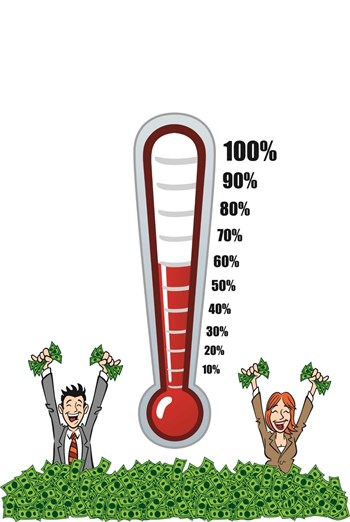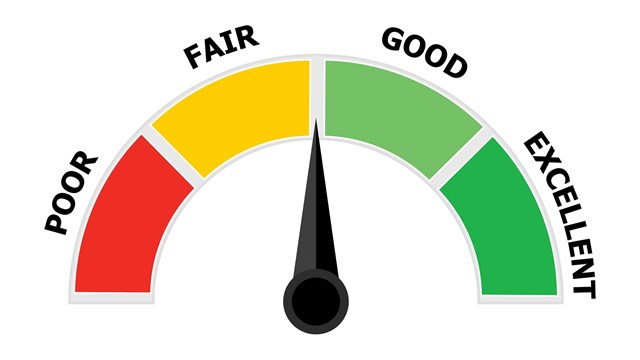
These days, just about everyone is cutting back on spending, either to make ends meet, saving for something special or a rainy day, paying off debt or funding their retirement. Consumers are cutting coupons, looking for deals and keeping a close eye on their dollars. Whenever costs or fees go up and consumers have to pay more, they invariably get upset.
The last thing that residents want to hear is that their association fees or common charges are being raised. Realistically though, to keep a building properly cared for and financially solvent, fees will need to be raised regularly and fairly. Not doing so can force a board to impose a large assessment or a big maintenance increase because they haven’t put enough money aside for a major repair or improvement project that has arisen.
In recent years, both Fannie Mae and Freddie Mac (the Federal National Mortgage Association and the Federal Home Loan Mortgage Corporation), government-sponsored enterprises that control the secondary mortgage market, have passed stricter lending guidelines for condominium financing. Among those rules, the Federal Housing Administration (FHA) now requires that condominiums set aside at least 10% of their operating income towards a capital reserve account. For example, if the annual budget is $200,000, then the association must set aside $20,000 for its capital reserve fund.
Necessary Funding
Just as an individual needs an emergency fund in case of a job loss or an unexpected car repair, an association needs a financial reserve to take care of such major repairs as roof leaks, plumbing problems or foundation issues.
A Community Associations Institute (CAI) study in 2012 found that cash-strapped associations are trying everything to make do. To compensate for a cash shortfall, the CAI study shows 38 percent have postponed planned capital improvement projects, 35 percent have reduced landscaping services, 31 percent have reduced contributions to their reserve accounts—funds that are set aside for major maintenance and repairs, 23 percent have borrowed from the association’s reserve account, 16 percent have levied special assessments, 12 percent are allowing residents to perform minor tasks in the community and 6 percent have borrowed from banks and other lenders.
“Owners also have a tendency to forget that they didn’t get an increase [last year] when they are asked for a larger than usual increase,” says Stuart H. Mayer, CPA at MayerMeinberg LLP, a certified public accounting firm with offices in New York City and Syosett. “But, reserve budgets provide additional comfort to the owners so that they know that when a major repair is needed they will not be hit with a large assessment.” he says.
Ostensibly, reserve budgets can look like extra cash lying around for a rainy day—and a tight-fisted board or association is often tempted to use the money to lower the budget. But when that roof begins to fail, and the reserve isn't there, all of the sudden the building is thousands of dollars in the red.
”What's happening is when you prepare a budget and you need a 3 percent increase, and you don't do it, you're already starting in the hole next year,” says Norman Prisand, CPA, who is a partner with the certified public accounting firm of Prisand, Mellina, Unterlack & Co., LLP in Plainview. “Eventually you set yourself up for a double-digit increase.”
To combat dipping into that reserve, many firms recommend boards should set up a separate committee dedicated to long-term investments. A strategic planning committee puts more emphasis on the need to keep fees where they should be and puts less political pressure on board members to raise fees when they are likely dealing with other difficult and unpopular decisions.
Like most things, repair costs rise, and the cost of a roof replacement today will most likely be higher than a roof installed 10 years ago. Especially in economically-difficult times, board members will feel pressure to cut costs, or stem the tide but oftentimes that expectation is unrealistic.
“It's very difficult to cut costs because upwards of 70 to 80 percent of a budget is typically comprised of debt service, real estate tax, wages and benefits, insurance and utilities,” says Prisand. “It's very hard to cut, so what buildings are doing is getting into energy-efficient appliances and light bulbs. The most important thing in the last two years is converting from oil to gas heat, and some buildings are also able to put in systems where they can generate a lot of their own electricity. Buildings are recouping their outlay investment in between three to four years. As a result, it’s vital to properly fund the reserves by raising fees accordingly,” he says.
When it comes to raising maintenance fees, it’s important to consider how residents find out, and what kind of communication level the board has with their neighbors.
“Boards should present the owners with a detailed budget that will show why the increase is needed,” says Mayer. To obtain approval for an increase in fees, management must meet with the board and present their reasons for the increase and then face a sometimes more difficult challenge—informing the unit owners. “We would suggest there be an open meeting where things are explained and charts are given out showing historical trends and how much of the budget is basically fixed, and what the needs are. Typically it’s the real estate tax that’s the prime driver of maintenance, followed by labor costs. There’s an educational and political aspect to it,” says Prisand.
Study Up
Reserve studies are done by a qualified engineer who calculates how much money is needed to cover replacements and repairs throughout the building or property. For example, let’s say the engineer determines the roof has seven years of life left before it needs to be replaced. The cost is $100,000. To raise that much money, the board or association will need to save a minimum of $14,000 per year just to cover this replacement (it’s assumed that you don’t have anything put aside).
The reserve study calculates the expected life of all of the building systems. Then it can be determined if fees need to be raised to cover the cost. Keeping the study up to date is important. It all depends on what the board or association is responsible for. You have buildings and HOAs, which have limited responsibility on the units themselves vs. condominium or cooperative associations where you have to fund for roofs and so on,” says Jon Gosnell, community manager at K.A. Diehl, a community association management company in Mt. Laurel, New Jersey.
Another budgeting tool is special assessments. Unlike reserve budgets, which factor into maintenance fees and follow a predetermined savings plan, special assessments raise cash all at once for a project that needs immediate funding. “Special assessments should be left for unanticipated circumstances. If you plan for operations and reserve funding, special assessments should be just that, something special like excess snow removal. It’s the age-old expression, and an ounce of prevention is worth a pound of cure,” says Gosnell.
All too often boards misuse special assessments as a way to keep maintenance fees artificially low. “If you’re doing an operating assessment every single year, it becomes a de facto maintenance fee because you’re doing it every year. You would get the same result except for the political aspect that you can say maintenance is ‘x.’ It’s a semantics issue,” says Prisand.
While almost every homeowner finds themselves in a more financially-precarious situation than they were several years ago, cutting costs may only lead to larger problems and bigger price tags down the road. One association interviewed for this article said it spent close to $1,000,000 to upgrade their energy efficiency. In 2012, they saved over $200,000 on their electric bill, allowing them to pay off the construction costs with the savings alone in just five years.
Sometimes it takes investment, not penny-pinching to make for a more cost-effective community.
While forking over money in the present can you help you save money in the long term, boards and associations are also finding ways to save costs by pitching in to do the work themselves. Especially in smaller communities, shareholders and unit owners have found ways to handle basic maintenance tasks like replacing light bulbs themselves, or clearing debris after a storm instead of paying a professional to do it; all the while cultivating a little more camaraderie between shareholders and unit owners.
Budget Wisely
What an association's budget looks like depends a lot on their specific circumstances, but it's still helpful to have a few guidelines for what makes for a healthy balance sheet. “On the operating reserves it should be anywhere from one month to three months of maintenance, as protection for the building for short run operations. As far as the capital reserves it all depends on your long range plan. A building should do at a minimum a five-year study of what major capital work is coming at them, and should plan for how to raise the money to take care of the work,” says Prisand.
Another factor among boards and associations is the fear that high maintenance fees will discourage buyers from completing a sale. While this may have been true in the past, many accountants say this is largely a myth.
“When people purchase co-ops and condos they ask to see the prior financial statements and they are always concerned about seeing every year large increases in maintenance and annual special assessments. Many times they will not purchase these properties because they are afraid of what will happen in subsequent years. They also will check similar buildings in the area and see what the maintenance is for a similar purchase,” says Mayer.
The good news is that there are more ways than ever to save money long-term if boards are willing to make the investments now. “There are always ways to save money. Especially over the past 10 or 12 years, there are a lot more maintenance-free products out there, whereas before you had to replace a rotted piece of wood with another piece of wood. They cost a little more on the front end but will save your more over the years. In subsequent budget years, they don’t have to put as much aside for painting or gutter clearing,” says Gosnell.
The reality is the property continues to age whether they can afford to make repairs or not, and many deferred repairs can create additional expenditures. Raising fees is something that is necessary, but by raising fees fairly on a regular basis, it should prevent special assessments and financial hardship for all involved.
Lisa Iannucci is a freelance writer and a frequent contributor to The Cooperator. Editorial Assistant Tom Lisi contributed to this article.






Leave a Comment